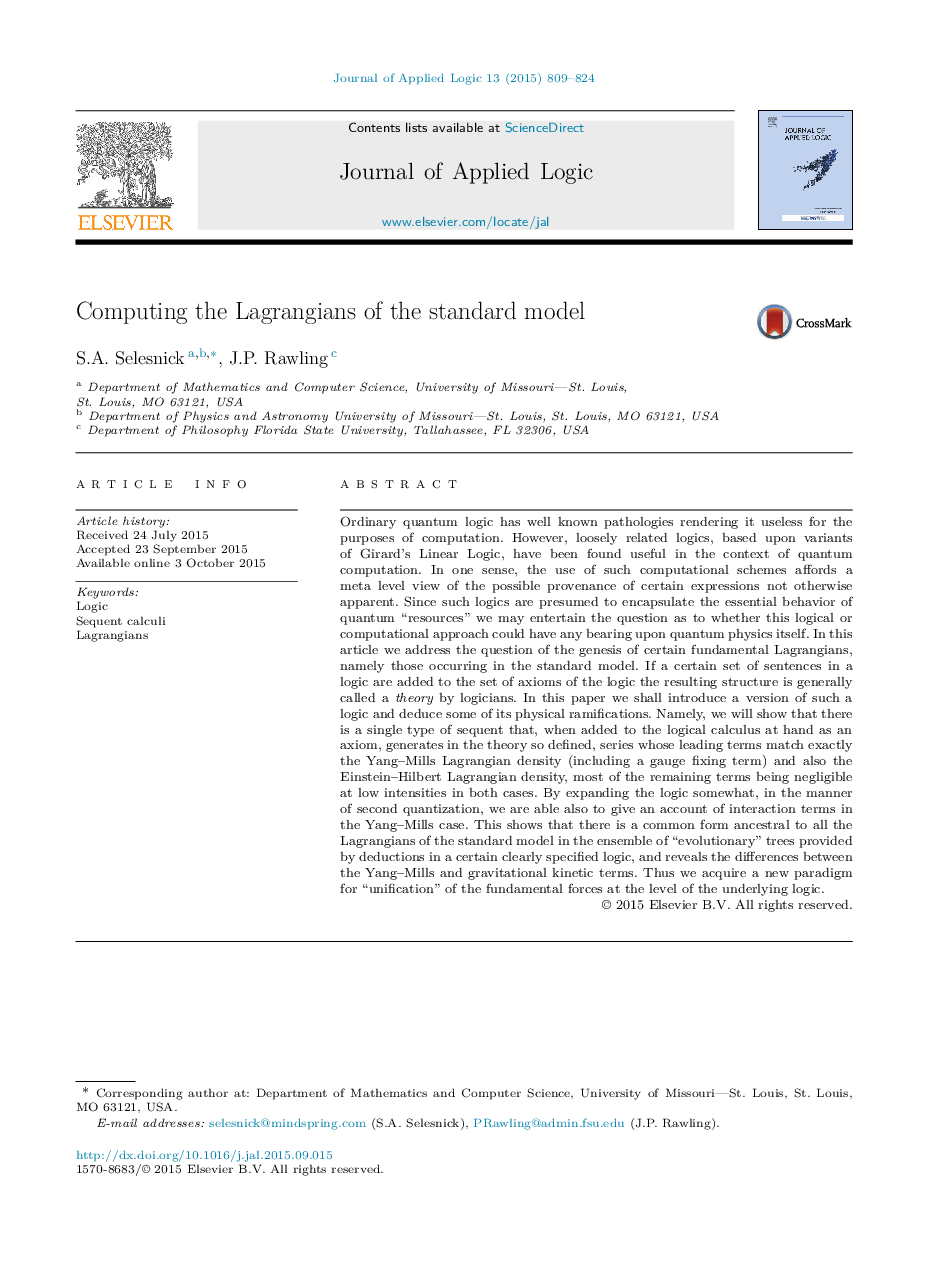| Article ID | Journal | Published Year | Pages | File Type |
|---|---|---|---|---|
| 4662885 | Journal of Applied Logic | 2015 | 16 Pages |
Ordinary quantum logic has well known pathologies rendering it useless for the purposes of computation. However, loosely related logics, based upon variants of Girard's Linear Logic, have been found useful in the context of quantum computation. In one sense, the use of such computational schemes affords a meta level view of the possible provenance of certain expressions not otherwise apparent. Since such logics are presumed to encapsulate the essential behavior of quantum “resources” we may entertain the question as to whether this logical or computational approach could have any bearing upon quantum physics itself. In this article we address the question of the genesis of certain fundamental Lagrangians, namely those occurring in the standard model. If a certain set of sentences in a logic are added to the set of axioms of the logic the resulting structure is generally called a theory by logicians. In this paper we shall introduce a version of such a logic and deduce some of its physical ramifications. Namely, we will show that there is a single type of sequent that, when added to the logical calculus at hand as an axiom, generates in the theory so defined, series whose leading terms match exactly the Yang–Mills Lagrangian density (including a gauge fixing term) and also the Einstein–Hilbert Lagrangian density, most of the remaining terms being negligible at low intensities in both cases. By expanding the logic somewhat, in the manner of second quantization, we are able also to give an account of interaction terms in the Yang–Mills case. This shows that there is a common form ancestral to all the Lagrangians of the standard model in the ensemble of “evolutionary” trees provided by deductions in a certain clearly specified logic, and reveals the differences between the Yang–Mills and gravitational kinetic terms. Thus we acquire a new paradigm for “unification” of the fundamental forces at the level of the underlying logic.
